Persian Carpet Flower (Edithcolea grandis) Care
Written by Iris
Nov 08 2021
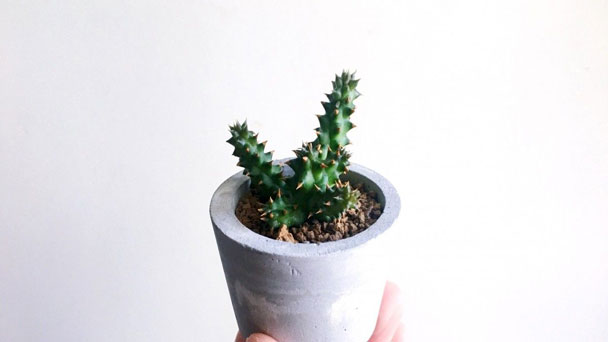
Persian Carpet flower (Edithcolea grandis) is a succulent plant from Africa with a very unique flower appearance, similar to the pattern of Persian carpet, which can be 13 cm in size. They are bait flowers, so they are pollinated in nature by flies. The genus Edithcolea contains only the species Edithcolea grandis. Persian Carpet flower is found in warm, dry areas. Persian Carpet flower is an easy to keep plant that performs well as an indoor plant.
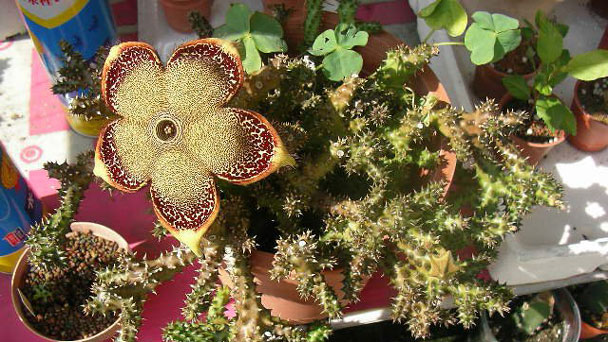
Simply brush away the topsoil so you can see some of the root systems and use your fingers to gently pull the offset away from the mother plant. Use caution as these plants are spiky. You may want to consider wearing gloves or using a towel or newspaper to protect your hands.
Once separated, you need to let the offsets air dry for a few days to allow any open wounds to callous before planting them in a new container. After they’ve calloused, they’re ready to be placed in their own pots and can be treated just as you would a mature plant.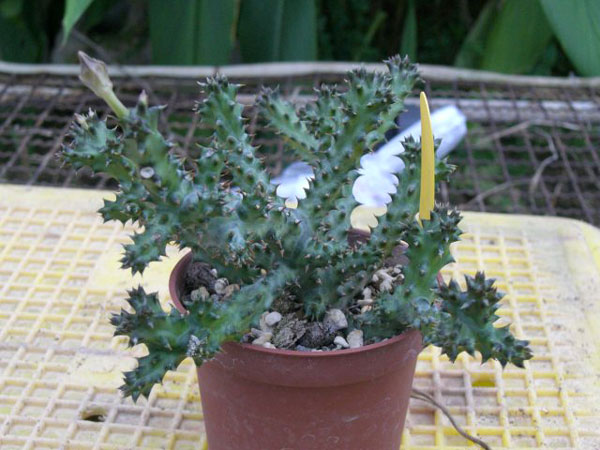
Keep in mind that these Persian carpet flowers are used to living in full sun or partially shaded areas, so they need lots of light to grow properly. If your interior space doesn't provide enough light, you may need to consider investing in growing lights.
Persian carpet flowers can be grown outdoors, but care must be taken during the winter months as they have specific temperature requirements. However, if you live in the right climate or are willing to bring plants indoors during the winter, you can grow the succulent outdoors.
Like interior Spaces, Persian carpet flowers need plenty of light. Full sun is ideal, but partial shade is also suitable. If the summer months are particularly hot, such as in the Southwestern United States, partial shade will help protect Persian carpet flowers from the sun during the hottest time of day.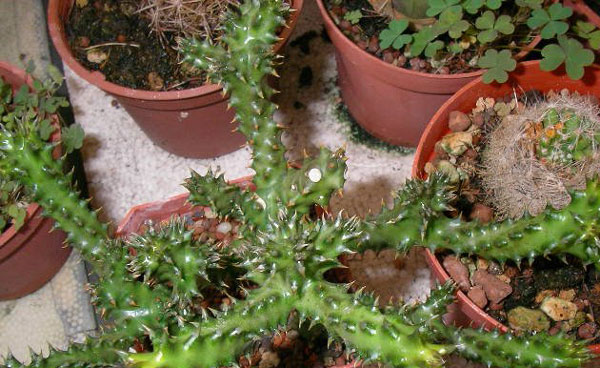
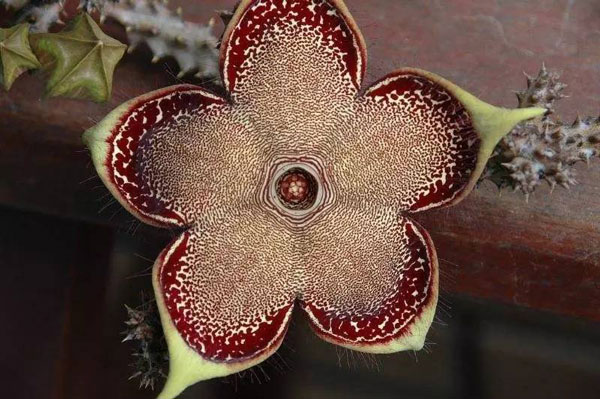
| Scientific Name | Edithcolea grandis |
| Common Name | Persian Carpet Flower |
| Hardiness Zone | 10 |
| Bloom Season | Summer |
| Sun Requirement | Full Sun, Partial Sun |
| Grows to | 4-6" |
| Minimum Temperature Indoors | 45 |
| Plant Type | Good for a Hanging Basket (Read More: 30+ Best Indoor Hanging Plants) |
How to Grow Persian Carpet Flower (Edithcolea grandis)Persian Carpet Flower Propagation with SeedsPersian Carpet Flower Propagation with Stem CuttingsPersian Carpet Flower Propagation with BeheadingPersian Carpet Flower Propagation with OffsetsHow to Care for Persian Carpet Flower (Edithcolea grandis)Light CareSoil CareWater CareTemperature & Humidity CareFertilizer CarePruning CarePests and DiseasesVarieties of Persian Carpet Flower (Edithcolea grandis)Persian Carpet Flower Care FAQIs Persian Carpet flower a cactus?Is Persian carpet flower easy to grow?
How to Grow Persian Carpet Flower (Edithcolea grandis)
Persian Carpet Flower Propagation with Seeds
Sow persian carpet flowers seeds in pots wider than height, with drain holes, and filled with substrate. Then, water the seeds and place them on the surface, taking care not to pile them up. Cover with a thin substrate, or pre-washed river sand, and place the seedlings outside or in a bright room near a heat source. It will start releasing roots in 15 to 20 days.Persian Carpet Flower Propagation with Stem Cuttings
Persian carpet flower (Edithcolea grandis) propagation is easiest with stem cuttings. Allow cuttings to dry a day before planting. Stems must be laid (not buried) on gritty compost and will then root from the underside of the stems. It can also be increased from seeds sowing in spring in moist, sandy peat moss.
Persian Carpet Flower Propagation with Beheading
You can use clean scissors to cut off the heads of Persian carpet flowers (Edithcolea grandis). Leave a few inches of space on the base for safety. There should be enough stem on the cut. Before replanting the new Persian carpet flowers, wait a few days so that the cutting and the base can dry. When calluses develop on the incision, replant it. When the soil dries out, don't forget to water it.Persian Carpet Flower Propagation with Offsets
The Persian Carpet Flower (Edithcolea grandis) does not frequently produce offsets, so it may be difficult to use this method of propagation very often. Most gardeners prefer one of the other methods instead. However, if your plant does produce offsets, it’s quite easy to separate them.Simply brush away the topsoil so you can see some of the root systems and use your fingers to gently pull the offset away from the mother plant. Use caution as these plants are spiky. You may want to consider wearing gloves or using a towel or newspaper to protect your hands.
Once separated, you need to let the offsets air dry for a few days to allow any open wounds to callous before planting them in a new container. After they’ve calloused, they’re ready to be placed in their own pots and can be treated just as you would a mature plant.

How to Care for Persian Carpet Flower (Edithcolea grandis)
Light Care
Persian carpet flower (Edithcolea grandis) is not a good plant for low-light environments, so it will not thrive in all indoor Spaces unless you are willing to provide it with growing lights. Windows facing south will provide the most light, but in some cases, Windows facing east or west can also be used.Keep in mind that these Persian carpet flowers are used to living in full sun or partially shaded areas, so they need lots of light to grow properly. If your interior space doesn't provide enough light, you may need to consider investing in growing lights.
Persian carpet flowers can be grown outdoors, but care must be taken during the winter months as they have specific temperature requirements. However, if you live in the right climate or are willing to bring plants indoors during the winter, you can grow the succulent outdoors.
Like interior Spaces, Persian carpet flowers need plenty of light. Full sun is ideal, but partial shade is also suitable. If the summer months are particularly hot, such as in the Southwestern United States, partial shade will help protect Persian carpet flowers from the sun during the hottest time of day.
Soil Care
As the Persian carpet flowers' roots are shallow, use a juicy mixture or add extra perlite or pumice to your regular soil potting soil. A sandy, well-drained compost is appropriate, and an earthenware pot can help the Persian carpet flowers dry out between watering. Persian carpet flowers don't require much substrate. Persian carpet flowers should just be a well drained, well ventilated matrix. If you don't want to complicate yourself, you can buy specific substrates for cactuses and succulents. Or you can create your own substrate. It is simple to mix universal matrix or garden soil with vermiculite, river sand and perlite.Water Care
Persian carpet flower (Edithcolea grandis) needs to be watered moderately throughout the growing season, but enjoy plenty of water and some fertilizer in hot weather, and let them dry before watering again. This helps Persian carpet flowers bloom freely. Water less in winter according to the temperature. But, as with most Asclepiads, it's unwise to keep Persian carpet flowers wet in cold weather.Temperature & Humidity Care
Persian carpet flower (Edithcolea grandis) is very susceptible to rot if exposed to temperatures below 5ºC/41°F. The perfect range for persian carpet flower (Edithcolea grandis) is between 22ºC/71°F-30ºC/80°F.
Fertilizer Care
Persian carpet flower (Edithcolea grandis) must be applied throughout the growing season, for example, from spring to late summer, and it is recommended to fertilize succulents according to the instructions on the package. It is also good to add some homemade fertilizer, such as eggshell tea or banana shell tea.Pruning Care
Persian carpet flower (Edithcolea grandis) does not need any pruning.Pests and Diseases
Persian carpet flowers are highly susceptible to stem and root mealworms, whose damage is likely to trigger fungal attacks. If there are some problems with stem or base rot, you can reliably isolate the healthy parts of Persian carpet flowers, dry them, and re-root them in wet compost.Varieties of Persian Carpet Flower (Edithcolea grandis)
There is only one known species of Persian carpet flower. It's called Persian carpet flower. It can be distinguished from the original by its stem, which is more, shorter and smaller in diameter. The stem is also often twisted in a spiral.
Persian Carpet Flower Care FAQ
Is Persian Carpet flower a cactus?
Edithcolea is a monotypic genus with a single species edithcolea grandis (Persian carpet flower). Once classified in the family Asclepiadaceae, it is now in the subfamily Asclepiadoideae of the dogbane family Apocynaceae.Is Persian carpet flower easy to grow?
No. Persian carpet flowers has a gained a reputation as a particularly difficult plant to keep because of its very specific growing needs with much light and relatively high (above 15 °C) winter temperatures. It's very susceptible to rot in combination with low temperatures.Latest Updated
- Benefits of Bugleweed - 7 Science-backed Health Benefits
- Bugleweed Dangers & Side Effects - Is It Poisonous?
- How to Plant Evergreen Trees - What You Should Know
- When to Plant Evergreens - Grow Guide for Evergreen Trees
- 12 Wonderful Evergreen Shrubs for Your Garden
- 12 Popular Evergreen Plants with Pictures for Beginners
- When And How To Prune A Lilac Bush Like a Pro
- How to Grow & Care for Lilac Vine (Hardenbergia Violacea)
- Japanese Lilac Tree (Syringa Reticulata) Care & Propagation Guide
- Shumard Oak Pros and Cons - What to Know
Popular Articles
- Winter maintenance of Antirrhinum Majus
- How to Grow Terminalia Mantaly Tree
- How to Grow and Care for Crossostephium Chinense
- How to grow Antirrhinum Majus in spring
- Peristeria Elata (Dove Orchid) Profile: Info & Care Guide
- Underwatered Snake Plant (Sansevieria Trifasciata) - Signs And How To Fix
- How to Care for Brazilian Jasmine Plant (Mandevilla Sanderi)
- How to Grow & Care for Graptopetalum Purple Delight in Summer
- Rosa Chinensis (China Rose): Plant Growing & Care Tips
- How to Care for Baby Sun Rose (Aptenia Cordifolia)